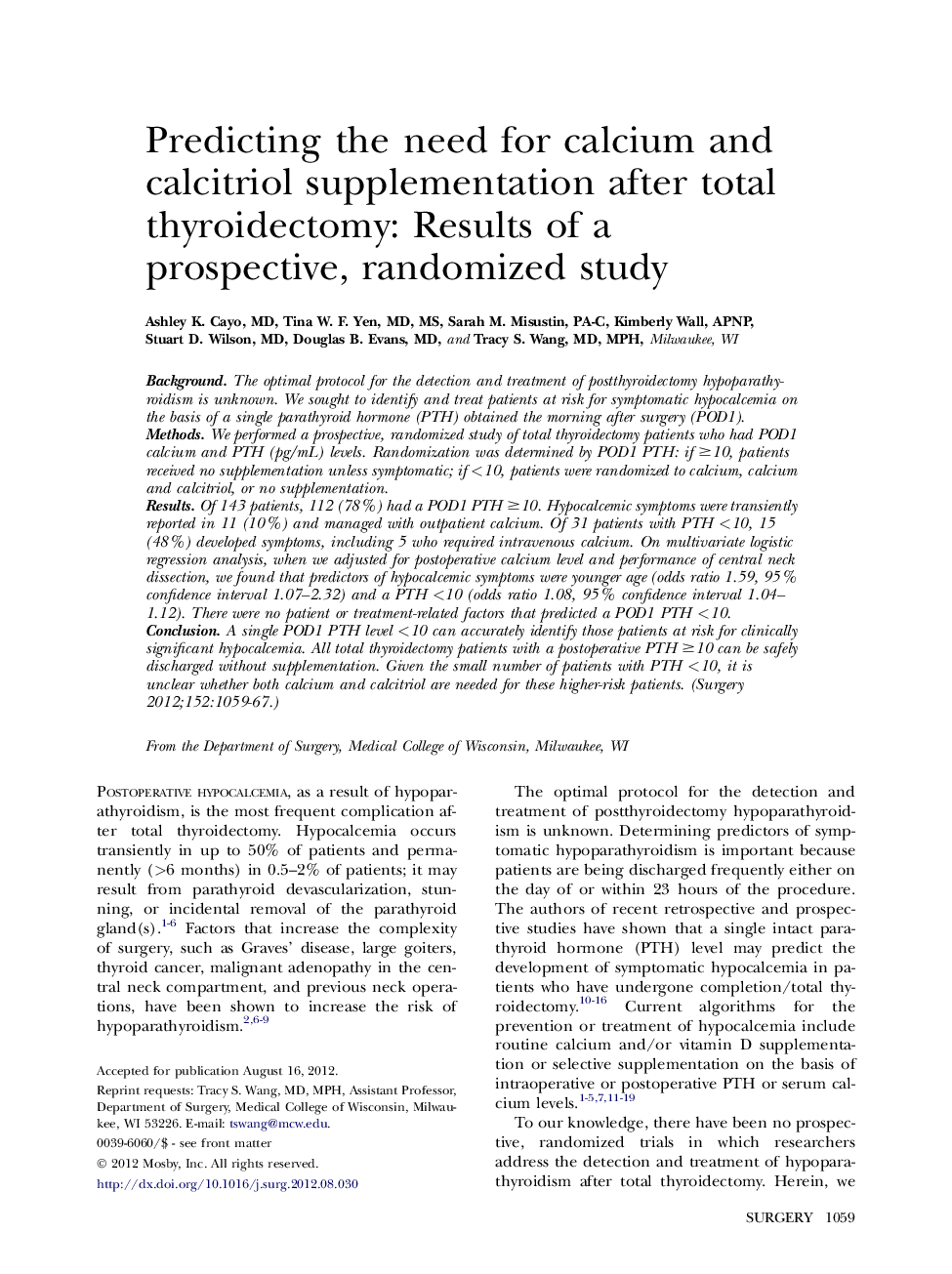| Article ID | Journal | Published Year | Pages | File Type |
|---|---|---|---|---|
| 4307725 | Surgery | 2012 | 9 Pages |
BackgroundThe optimal protocol for the detection and treatment of postthyroidectomy hypoparathyroidism is unknown. We sought to identify and treat patients at risk for symptomatic hypocalcemia on the basis of a single parathyroid hormone (PTH) obtained the morning after surgery (POD1).MethodsWe performed a prospective, randomized study of total thyroidectomy patients who had POD1 calcium and PTH (pg/mL) levels. Randomization was determined by POD1 PTH: if ≥10, patients received no supplementation unless symptomatic; if <10, patients were randomized to calcium, calcium and calcitriol, or no supplementation.ResultsOf 143 patients, 112 (78%) had a POD1 PTH ≥10. Hypocalcemic symptoms were transiently reported in 11 (10%) and managed with outpatient calcium. Of 31 patients with PTH <10, 15 (48%) developed symptoms, including 5 who required intravenous calcium. On multivariate logistic regression analysis, when we adjusted for postoperative calcium level and performance of central neck dissection, we found that predictors of hypocalcemic symptoms were younger age (odds ratio 1.59, 95% confidence interval 1.07–2.32) and a PTH <10 (odds ratio 1.08, 95% confidence interval 1.04–1.12). There were no patient or treatment-related factors that predicted a POD1 PTH <10.ConclusionA single POD1 PTH level <10 can accurately identify those patients at risk for clinically significant hypocalcemia. All total thyroidectomy patients with a postoperative PTH ≥10 can be safely discharged without supplementation. Given the small number of patients with PTH <10, it is unclear whether both calcium and calcitriol are needed for these higher-risk patients.
